Story of a Senator
How an ROV helped make this filmmaker’s dream a reality
Words and Photos by Evan Kovacs
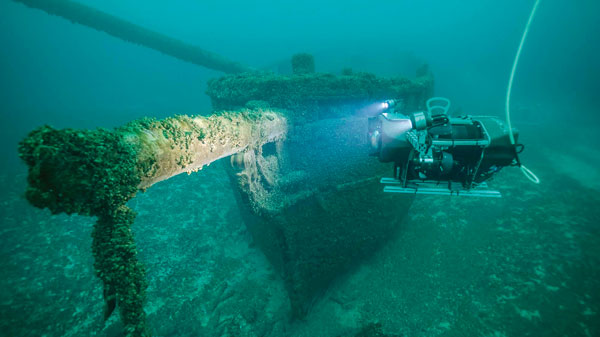
For years I have wanted to do a film based on a true story and set during an event that brought most of the world to crippling standstill. Almost overnight, average citizens see their life savings wiped out and financial institutions fail in a catastrophic stock market crash. The Crash – of October, 1929. And while stock values plummet, three very different ships – each carrying goods that had helped fuel economic prosperity – fight the rain, fog, winds, and rising waters of an epic storm on Lake Michigan. During the financial storm of a lifetime, as the world reels and many doomed investors jump to their death, these three vessels and many of their crew are damned to the cold and muddy seabed near Milwaukee, Wisconsin.
Something about these wrecks had always grabbed my attention. The parallel of an economic storm that destroyed lives across the world while simultaneously a literal storm claimed the lives of the people who carried the goods that the economy consumed was incredibly moving and cinematic. I wanted to make a film that looked at all three wrecks and, by examining their cargos, their captains, and their different ends, tell a grand story of life and death, heroism and cowardice, all against the backdrop of a world on fire. It was ambitious, it was bold, it was the dream of a young film maker – and it could never happen. Why? Well, the millions of dollars I would need to make it aside, because of one small detail: one wreck had yet to be found – the SS Senator.
My good friend Tamara Thomsen, cave explorer, instructor, and archaeologist at the Wisconsin Historical Society, had been talking about the beautiful wrecks of Lake Michigan for years. I already knew about the car ferry Milwaukee from a show I had done there. It was one of my favorite wreck dives, with an incredibly intact engine room where you could see boiler room hatches sitting on top of the boilers, placed there by the crew 80 years ago in a last ditch effort to stop the boilers from exploding in the rising waters and storm. The story went on from there with a message in a bottle from the sinking ship, floating life jackets, and even bodies on shore – the human story and the struggle for survival and their final reckoning was incredible. But it wasn’t until I was actually working with Tami filming the Milwaukee for the National register that I learned about its connection to the Senator and Wisconsin. Naturally I wanted to see the others and hear more of their stories. The Wisconsin foundered in the storm and the captain directed rescue efforts at the helm of his sinking ship while other ships came to its aid in a fantastic at sea rescue. The sinking represented some of the best qualities in people, as captains risked their lives and their ships in the dramatic rescue. Today, the wreck is a beautiful dive in 135 feet (41m) of clear, dark water.
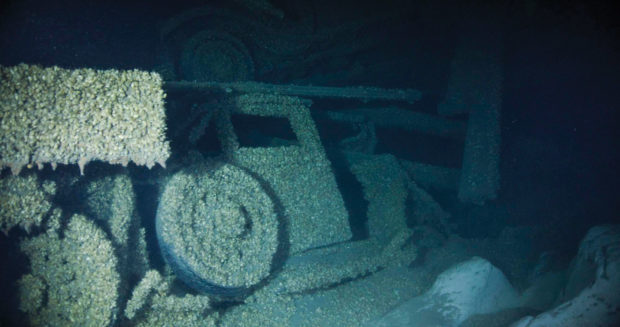
The final wreck of the triumvirate was the SS Senator. The Senator carried 268 Nash Automobiles and although she missed the storm, a fog settled in with visibility less than 100 feet (30m). Despite the conditions, the captain was running at full speed, while dead ahead, shrouded by fog, was the SS Marquette. The Marquette actually struck the Senator and the collision sent the Senator with her cargo of “fresh from the factory” Nash autos to the bottom.
Acrimonious stories of the Marquette not helping the crew of the stricken vessel while they were floating in the water abounded. If not for the fisherman on a local fishing tug boat who heard the crash and steamed in to look for it, many of the crew who survived probably would not have. This wreck had eluded discovery for decades and although it was located by Great Lakes wreck hunter Paul Ehorn in 2005 at a very deep 450 feet (137m), it had never been confirmed. No one had dived it, although someone purportedly lost a Remotely Operated Vehicle (ROV) on it while exploring. The only known images were from Tami and Tom Crossmon and his ROV in 2016, but the visibility was so bad they only had sonar images. Even so, the sonar images were fascinating and a tribute to Tom’s piloting skills. They not only got the ROV to the wreck but on the sonar you could see the cars stacked up in the holds.
This was a wreck I had to see – and fortunately, I finally had the right tools to explore and film it.
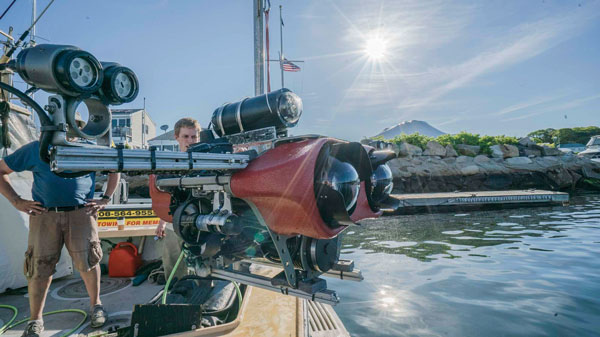
The spread
Over the years our team at the Advanced Imaging and Visualization Lab (AIVL) at Woods Hole Oceanographic Institution has been asked to dive on wrecks for many groups all over the world. Often those wrecks are beyond recreational – and even pushing technical – depths. In these situations, the best tool for some types of exploration and planning often is not a diver, due to the time and safety constraints. Our practice is to try to employ the best tools that budget and platforms allow for all aspects of the job. Examined this way, the dive team becomes one of several options and is often considered more risky and less efficient when trying to plan shots for filming and have a general look on deep sites. More and more often the primary tool for initial exploration and planning is becoming an ROV.
Tami is the queen of doing a lot on a very small budget for her job. She can stretch her budget further than anyone I ever met and when she runs out of budget, she starts calling in her friends and often ends up with just what she needs. For this project she managed to get Tom Crossman and his boat for the ops; my company, Marine Imagining Technolgies, donated the use of Pixel, a “Cinema Class ROV” we had designed and built; AIVL donated the cameras; and David Ullman, Billy Gambrill (divers and ROV pilots from NY) and I donated our time. Of course it didn’t hurt that Tami and I have been talking about filming this wreck for years, so when the chance came I jumped at it!
Anyone who has worked on Lake Michigan knows just how capricious the seas can be. Our days this time were on an incredibly flat and glassy sea, marked only by the occasional dimple of a light breeze. We decided as a team not to anchor the boat, since Tom had so much experience live boating with ROV’s. Considering he is usually the ROV pilot on his own jobs, Tom was a fantastic captain on this job who never left the helm and – most importantly – never ran over the tether, thanks to the constant communication between David, Billy, and him. Our first drop down felt like hours as we watched the swirling darkness engulf the screens, we fretted all the little things that we couldn’t know quite yet: how bad was the current? Did we drift off? Is the depth gauge right? Is the compass right? Every issue you’ve seen over the years on vehicles around the world suddenly flashes through your mind and for a brief moment, just like before jumping in the water on a deep dive, the butterflies consume. But just like diving, we breathe, focus on the task at hand and, before you know it, the bottom comes into view. It’s definitely not as dangerous as diving, but the feelings of concern are real when you watch your entire savings for several years descend down a 1/2” (1.25cm) tether and the only connection is a few strands of copper, glass, and rubber!
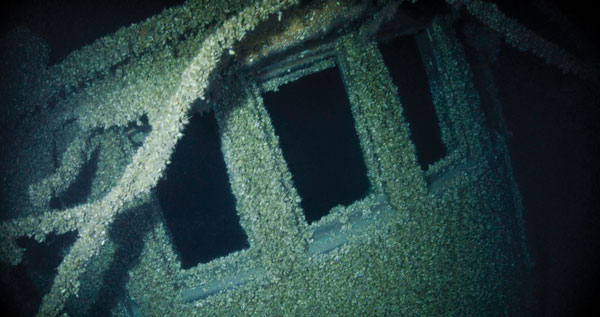
Successful survey
Our initial descent ended in the dirt and we began to scan visually for the wreck, took a compass bearing, and headed into the unknown. Quickly, we ran headlong into the life boat of the SS Senator, which no one had seen for nearly a century! The first piece of wreckage that you see when you are looking for a wreck – be it a timber, an iron plate, a random piece of something which just doesn’t belong – causes your heart to beat faster and excitement to set in. The exhilaration and excitement of examining a new shipwreck, combined with the constant threat of entanglement, getting stuck, or somehow losing the vehicle keeps you glued to the screen and immersed in the moment. Although we have lots of other cameras and sensors that could be added to the vehicle to help operate in an environment like this, we had to go “lean and mean” for our time on the Senator and only had primary exploration cameras. But, just like in diving, these are the experiences that ultimately hone our skills, shape us as individuals and allow us to rapidly progress.
The life boat was only the beginning of our two day adventure on the wreck. The going was slow as we canvassed the wreck. We looked in the pilot house windows, wrapped our tether around the bow, avoided fallen masts, and admired the long neck and the pulley system of the car elevator that once lowered the Nash automobiles into the decks below. We peered in the holes that Tom and Tami had briefly peered in before with their sonar in 2016 and saw beautiful old Nash automobiles piled on top of each other – some looked so good you felt as you could just wipe off the dirt and drive away. We observed that part of the stern was missing – perhaps not far off, but location still unknown to us – and that the rows of cars that used to be on the decks were not piled up at the stern like we thought from the sonar images but completely missing, likely scattered across the lake floor as she went down in 1929. All in all, a great exploration, but even with the ROV, it just wasn’t enough….
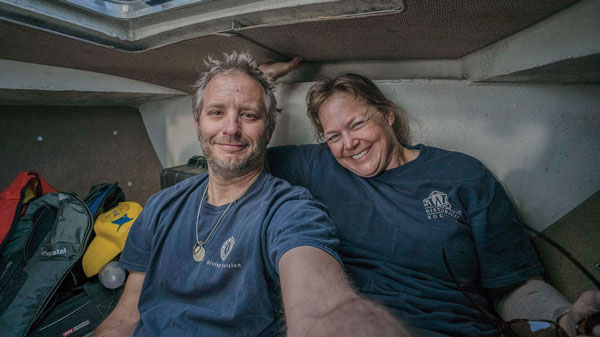
Over two days we clocked up ten hours on the wreck – a goodly amount of time to spend there, but never enough. If I wanted to put that many hours on the wreck diving, we would have spent about 5-6 hours in the water for every 30 minutes of bottom time, totalling nearly 100 hours total time in the water to match the 10 hours with the ROV! To get that amount of actual dive time in Lake Michigan in those depths would have taken many weeks over the course of several expeditions and cost a small fortune. By utilizing the best tool for the job we can now make intelligent decisions about the safest way for the dive team to film the wreck while working with Pixel and collecting some great imagery. With luck, one day this will be a film reminding us of how just how personal a shipwreck is, particularly when we think about the men and women in their final moments of life as they struggle to survive against the cold, dark and unforgiving sea.
Evan Kovacs is a underwater cinematographer, deep water consultant and explorer. He is founder and CEO of Marine Imaging Technologies.







